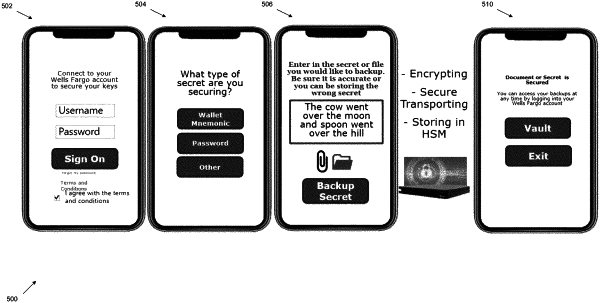| CPC G06Q 20/3674 (2013.01) [G06F 16/285 (2019.01); G06Q 20/3829 (2013.01); H04L 9/0861 (2013.01); H04L 9/3213 (2013.01); G06Q 40/02 (2013.01); G06Q 40/04 (2013.01); G06Q 50/186 (2013.01)] | 18 Claims |

|
1. A system for a digital asset vault, comprising:
one or more processors; and
non-transitory computer-readable storage encoding instructions which, when executed by the one or more processors, cause the system to:
receive a request to connect to a secure portal, wherein the secure portal interfaces with multiple parties, wherein the multiple parties provide different third-party wallets for a customer, the different third-party wallets providing different encryption techniques for a secret of the customer;
generate a key;
generate an interface displaying a plurality of types of secrets, the types of secrets including a type of secret associated with a cryptocurrency wallet and a type of secret associated with something other than a cryptocurrency wallet;
receive, via the interface, a selection from the customer of one of the plurality of types of secrets corresponding to a selected type and corresponding to the secret;
receive data from the customer associated with a categorization having the selected type from one or more data sources associated with the different third-party wallets; and
prepare the data with category types, including to:
encrypt the data at least twice based on the different encryption techniques provided by the different third-party wallets; and
store the data based on one of the category types.
|